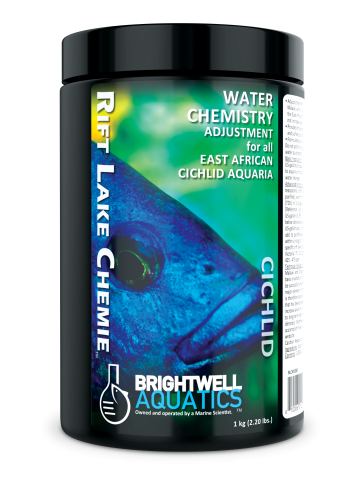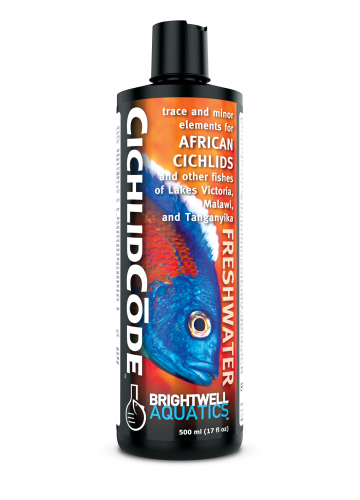Rift Lake dKH
Buffer Powder for all East African Cichlid Aquaria
Overview
- Alkalinity-increasing (”buffer”) powdered blend formulated specifically for maintaining pH-stability in Rift Lake biotope aquaria and other systems housing fishes and plants endemic to environments with an alkaline pH.
- Not a re-packaged marine aquarium buffer.
- Helps increase pH stability in an aquarium by raising the alkalinity; continued addition raises pH to a range of 7.9 – 8.3.
- Formulated by a marine scientist.
Sizes
- 250 g
- 500 g
- 1 kg
- 4 kg
- 20 kg
Technical Background
Alkalinity, also referred to as carbonate hardness or buffering capacity, is essentially a means of quantifying the stability of pH in a solution, such as aquarium water. Maintaining the alkalinity in rift lake aquaria between 5 – 10 dKH (~1.8 – 3.6 meq/L) will generally maintain pH within the desired range. Note that the water chemistry of Lakes Victoria, Malawi, and Tanganyika are different, and the parameters maintained in biotope systems should reflect those differences.
Instructions and Guidelines
Determine alkalinity in aquarium with an accurate test kit prior to supplementing. Do not add this product directly to an aquarium without first diluting in water as directed.
Basic Instructions and Guidelines: Dissolve 2 grams (~½ teaspoon) of product per 20 US-gallons of aquarium water in 8-fl. oz. of fresh water; add every other day or as needed to maintain the alkalinity within a range of 5 – 10 dKH. When used in this fashion, 500 g treats up to 5,000 US-gallons (18,927 L).
Advanced Instructions and Guidelines: Create a stock solution by dissolving 20 grams (~5 teaspoons) of Rift Lake dKH in 8-fl. oz. of fresh water (preferably purified); each ml of stock sol’n will increase the alkalinity in 1 US-gallon (3.785 L) of water by 0.34 dKH (0.12 meq/L). [Reference: Each g of Rift Lake dKH will increase the alkalinity in 1 US-gallon (3.785 L) of water by 6.5 dKH (2.32 meq/L).] If initial alkalinity in aquarium is below 5 dKH (~1.8 meq/L), add stock sol’n at maximum rate of 10 ml per 20 US-gallons daily until desired alkalinity is attained, then dose daily or weekly as needed (see below). Maintain alkalinity within a range of +/-1 dKH. Once the desired alkalinity has been acquired, measure the alkalinity at the same time each day over a one- to two-week period to determine required dosing rate. To determine the daily dosing rate (preferable to weekly dosing): estimate the volume of water in the entire aquarium system; divide the daily decrease in alkalinity by 0.34 when measuring dKH or by 0.12 when measuring meq/L; multiply this number by the volume of water (gallons) in the system to get the daily ml of stock sol’n required to maintain stable alkalinity.
Caution: Contains carbonate and bicarbonate salts; harmful if swallowed. If swallowed: give water, get medical attention. May cause eye or skin irritation. If in eyes, flush with water for 15 minutes, get medical attention. If on skin, wash thoroughly with water. Keep out of reach of children. Not for human consumption.
Guaranteed Analysis (by weight)
pH-Stabilizing Components (min) 60% (600,000 ppm)
Ingredients
Inorganic salts of carbonate, bicarbonate, and borate

